CIO as a Service (CIOaaS) is a model where companies can access Chief Information Officer expertise on demand without needing to hire a full-time executive. This service offers businesses the strategic oversight and leadership needed to effectively manage their IT infrastructure and systems, including cloud computing services. Organizations can leverage these services to align their technology strategy with business goals and enhance overall operational efficiency.
CIOaaS can encompass a range of IT services, including strategic planning, risk management, compliance, and technology innovation. By utilizing this model, businesses can concentrate on their core activities while benefiting from high-level IT decision-making.
Importance of CIO Services for SMEs
Small and Medium Enterprises (SMEs) often face unique challenges regarding IT management due to limited budgets and resources. CIO services provide several advantages specifically for these organizations:
| Benefit | Description |
| Cost-Effective Solutions | Small businesses can reduce expenses by avoiding the costs of hiring a full-time CIO, yet still benefit from professional expertise. |
| Expert Guidance | Access to knowledgeable professionals ensures that SMEs can leverage industry best practices and innovative technologies. |
| Enhanced IT Strategy | CIOaaS helps SMEs develop and implement IT strategies that align with their business objectives, fostering growth and efficiency. |
| Scalability | As SMEs grow, CIO services can easily adapt to changing IT needs, providing the necessary support without overwhelming resources. |
Employing CIO as a Service, SMEs can turn their IT initiatives into strategic advantages, allowing them to compete more effectively in the marketplace. The consulting nature of CIOaaS means businesses can receive tailored solutions that address their specific needs and challenges.
8 Advantages of CIO as a Service
CIO as a Service provides several significant advantages, particularly for small and medium-sized enterprises (SMEs) seeking effective IT management solutions. Here are some of the key benefits:
1. Cost Efficiency
Outsourcing CIO functions eliminates the need to hire a full-time executive, significantly reducing salary, benefits, and overhead costs. This allows SMEs to access high-level IT leadership without the financial burden of a permanent position.
2. Access to Expertise
CIO as a Service provides businesses with access to seasoned IT professionals who bring a wealth of experience across various industries and technologies. This ensures strategic IT decisions are well-informed and aligned with business goals.
3. Flexibility and Scalability
Companies can tailor the CIO services to their specific needs, scaling up or down as business demands change. This flexibility allows for a more responsive and adaptive IT strategy that evolves with the company.
4. Accelerated Digital Transformation
With expert guidance from a CIO service, organizations can streamline their digital transformation efforts, adopting new technologies faster and more efficiently while minimizing disruption.
5. Improved IT Governance
CIO as a Service enhances IT governance by establishing clear policies, compliance standards, and risk management strategies. This leads to more secure and reliable IT operations.
6. Focus on Core Business
By delegating IT leadership responsibilities to a CIO service, companies can focus more on their core business activities, confident that their IT infrastructure and strategy are in expert hands.
7. Objective Perspective
An external CIO can provide an unbiased view of the company’s IT environment, helping identify inefficiencies and opportunities that internal teams might overlook.
8. Faster Problem Resolution
With dedicated CIO support, organizations benefit from quicker identification and resolution of IT challenges, reducing downtime and maintaining business continuity.
These advantages make CIO as a Service an attractive option for SMEs aiming to enhance their IT management without incurring excessive costs or compromising on efficiency.
Role of a CIO in IT Management
A Chief Information Officer or the CIO, holds a vital responsibility in overseeing and directing the organization’s IT operations. Their responsibilities are broad and encompass various aspects, including strategic planning, risk management, and technology innovation.

Strategic Planning and Alignment
The CIO is responsible for aligning IT strategies with the overall business objectives of the organization. This ensures that technology investments support company goals and drive growth. A strategic plan typically includes an assessment of the current technology landscape, identification of areas for improvement, and detailed action plans to implement necessary changes.
Risk Management and Compliance
Risk management is a significant aspect of the CIO's duties. They must identify potential risks that could impact the organization's data and operations. In addition, the CIO ensures compliance with industry regulations and standards, reducing the likelihood of fines and enhancing the organization's reputation.
Technology Innovation and Optimization
The CIO also drives innovation by exploring new technologies that can enhance the organization's efficiency and competitiveness. This involves not just adopting the latest tools but also optimizing existing systems to improve performance and reduce costs.
Fulfilling these roles, the CIO contributes significantly to an organization's IT management, ensuring that technology aligns with business goals while managing risks and fostering innovation.
How CIO as a Service Works
CIO as a Service offers an efficient way for small and medium-sized enterprises (SMEs) to access strategic IT management without the need for a full-time Chief Information Officer. This service involves several key steps that ensure businesses receive the support they need to achieve their IT goals.
Assessing IT Needs and Goals
The first step in the CIO as a Service process is a thorough assessment of the business’s current IT needs and goals. This involves analyzing existing systems, understanding business objectives, and identifying areas for improvement. During this assessment, factors such as the following are evaluated:
| Assessment Factor | Description |
| Current IT Infrastructure | Review of existing hardware and software systems. |
| Business Objectives | Analysis of short-term and long-term goals. |
| Pain Points | Identification of existing IT issues or challenges. |
| Compliance Requirements | Evaluation of regulatory and compliance needs. |
This comprehensive assessment allows the CIO to gain insight into the unique requirements of the organization.
Developing Customized IT Strategies
Once the needs assessment is complete, the next step is to develop tailored IT strategies. These strategies are designed to align with the business's goals while addressing the identified challenges. Key components of this strategy development include:
| Strategy Component | Focus Area |
| Technology Roadmap | Defined timeline for technology upgrades and implementations. |
| Budget Planning | Financial allocation for IT investments and resources. |
| Risk Management Plan | Strategies to mitigate potential IT risks. |
| Performance Metrics | Setting measurable goals to track IT effectiveness. |
Creating customized strategies, the CIO ensures that the IT services provided will directly support the overall business strategy.
Implementing and Monitoring IT Solutions
The final step in the CIO as a Service model involves the actual implementation and ongoing monitoring of the IT solutions. This phase includes:
| Implementation Steps | Description |
| Deployment of Solutions | Executing the IT strategies and integrating new technologies. |
| Staff Training | Providing training and support for employees on new systems. |
| Performance Monitoring | Regularly tracking the effectiveness of the solutions implemented. |
| Adjustments and Updates | Making necessary changes based on performance data and evolving needs. |
Monitoring is crucial for ensuring that IT solutions remain effective over time and adapt to changing business requirements. Through continuous evaluation, the service can adapt strategies and tools, maintaining alignment with the business's objectives—an essential aspect explored in The Role of Cloud Infrastructure Tools in Digital Transformation, which highlights how modern cloud solutions empower businesses to stay agile and responsive in a rapidly evolving digital landscape.
Finding the Right CIO Service Provider
Choosing the right CIO service provider is crucial for small and medium enterprises (SMEs) seeking effective IT management. This section outlines the key factors to consider, how to evaluate service offerings, and the importance of ensuring alignment with business objectives.
4 Factors to Consider
When evaluating potential CIO service providers, several important factors should be taken into account:
| Factor | Description |
| Experience | Look for providers with a track record in delivering CIO services to SMEs. |
| Expertise | Ensure they possess knowledge in relevant technologies and industries. |
| Services Offered | Consider the range of services they provide and if they meet your needs. |
| Support Structure | Assess their availability for ongoing support and consultation. |
Evaluating Service Offerings
It is essential to evaluate the specific services offered by a CIO provider. This can include:
| Service Type | Description |
| Strategic IT Planning | Developing long-term IT strategies aligned with business goals. |
| Compliance Management | Ensuring adherence to industry regulations and standards. |
| Risk Assessment | Identifying and mitigating potential risks to IT operations. |
| Vendor Management | Overseeing relationships with third-party technology vendors. |
For SMEs, understanding what is included in each service offering helps in making an informed decision.
Ensuring Alignment with Business Objectives
The chosen CIO service provider must align their strategies with the overall objectives of the SME. Consider the following aspects:
| Alignment Aspect | Importance |
| Business Goals | The provider should understand and support your long-term vision. |
| IT Budget | Solutions should be within the financial constraints of the organization. |
| Company Culture | The provider’s approach and values should resonate with the company's culture. |
| Communication Styles | Effective communication is essential for a successful partnership. |
Assessing these factors, SMEs can select a CIO service provider that not only meets their technical needs but also aligns with their business aspirations.
Maximizing the Benefits of CIO as a Service
To fully leverage the advantages of CIO as a Service, organizations must focus on effective communication, regular assessments, and continual improvement. This section will address essential practices for optimizing the use of CIO services.

Communication and Collaboration
Establishing open lines of communication between the CIO service provider and the organization is vital for success. Regular updates and collaborative sessions foster a clear understanding of IT goals, challenges, and strategies. This exchange ensures that IT solutions are aligned with business objectives.
Regular Performance Reviews
Conducting regular performance evaluations allows organizations to assess the effectiveness of their IT strategies. These reviews should examine key performance indicators (KPIs) to measure success and identify areas for improvement. An effective review process encourages accountability and helps refine IT initiatives.
Continuous Improvement and Adaptation
In the rapidly evolving tech landscape, continuous improvement is crucial. Organizations should foster an adaptable mindset, allowing for regular updates and modifications to IT strategies. Embracing new technologies and methodologies enhances operational efficiency and supports long-term growth.
Next-Level Solutions, Powered by LK Tech
Prioritizing clear communication, regular performance assessments, and a dedication to continuous improvement allows SMEs to fully leverage CIO as a Service, aligning IT management with their business goals effectively. At LK Tech, we deliver top-notch IT support tailored specifically to your unique needs, helping your business stay agile and competitive.
If you want a partner that truly understands your technology challenges, don't hesitate to reach out. For reliable solutions from leading IT companies in Cincinnati, don’t hesitate to contact us today to get started.


